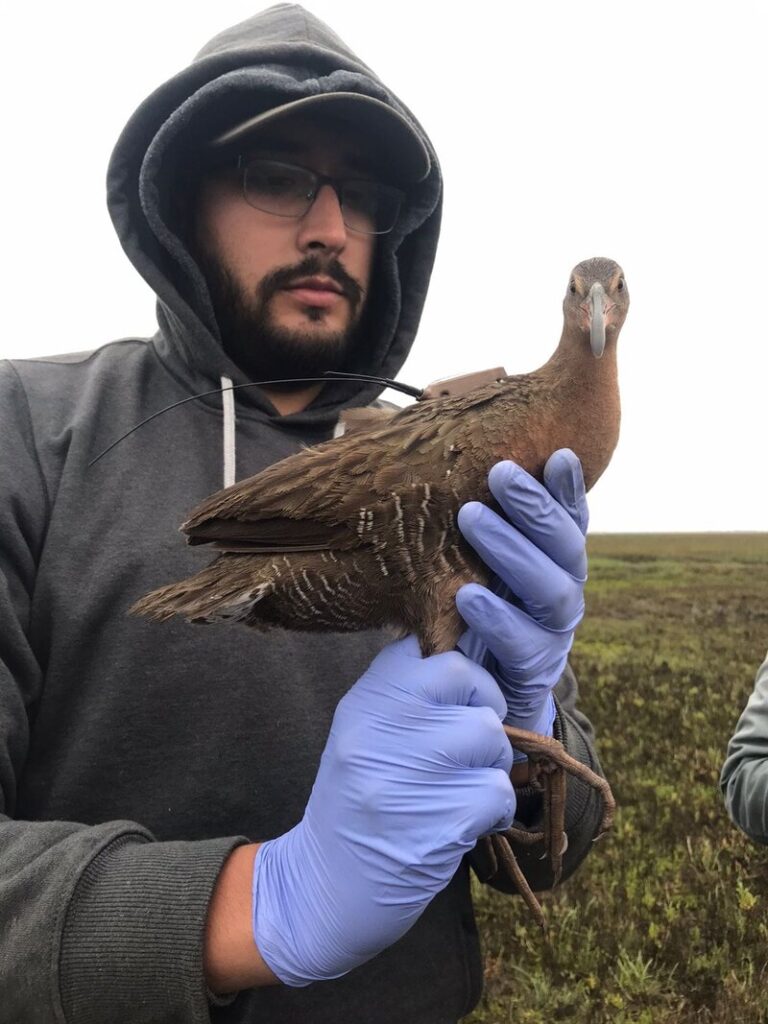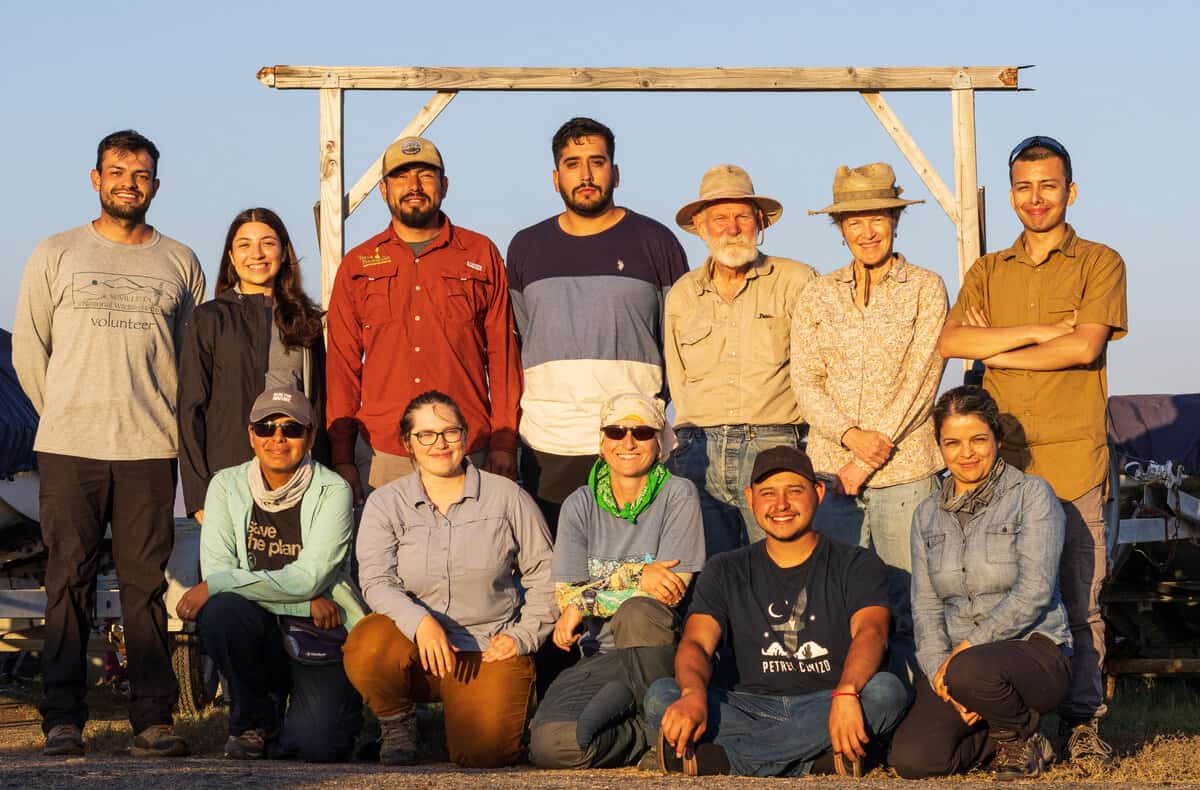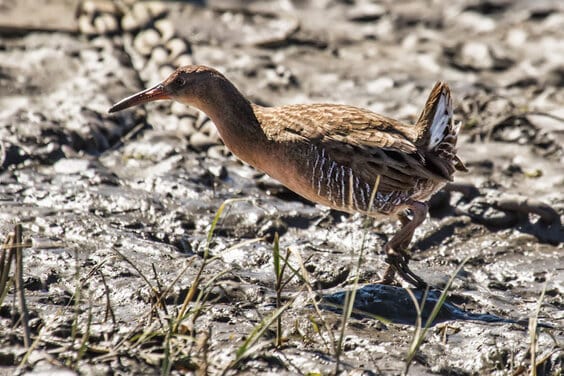By Hiram Moreno, Autonomous University of Baja California, Horacio de la Cueva, CICESE, and Hans Sin, California Department of Fish and Wildlife
The Light-footed Ridgway’s Rail (Rallus obsoletus levipes, hereafter rail) is a threatened subspecies that in Mexico is distributed in the coastal wetlands of northwestern Baja California, concentrated in Estero Punta Banda and Bahía de San Quintín. The main threats for the species are the degradation, alteration, and loss of habitat from urban development and the threat of sea-level rise. In our previous article we discuss the habitat and threats in detail. Here we present updates on the binational effort to protect the species.
The situation is urgent to save the species, but protecting the coastal lagoons of Baja California, south of the U.S. border, give us an optimistic view of a better future. Since 2019, we have increased the transboundary collaboration program. This effort seeks to unravel the complexities of the species’ population dynamics, movements within the habitat, genetics, and ecological connections to the rest of the wetland. By targeting the populations in Estero Punta Banda in Todos Santos Bay and San Quintín Bay, we aim to generate knowledge that can pave the way for effective conservation strategies for the species and the wetlands.
We conducted standardized monitoring for this rail, estimating its numbers and distribution in both lagoons. We conducted detailed habitat assessments to provide an accurate image of the current state of the bird in the Baja California’s wetlands. By using GPS telemetry to track birds’ movements in and out of the breeding season, we have a better understanding their behavioral patterns and spatial preferences. Upcoming genetic analyses will reveal histories of population connectivity and transboundary dispersal, illustrating the intricate forces that regulate the existence of this species.

Because of their status and habitat use, the rail is considered an “umbrella species”. This designation is given to species whose protection measures extend to the entire ecosystem they inhabit. Our research extends beyond the bird, we seek to understand the aquatic and terrestrial diversity of plants, vertebrates, and invertebrates with which it coexists. By studying and beginning to understand these interconnections, we will have the tools necessary to make science-based decisions about habitat restoration and management, decisions that impact the entire biodiversity of these coastal wetlands.
This effort serves as a testament to the power of transnational and multidisciplinary collaboration. The partners in this alliance are the California Department of Fish and Wildlife, Terra Peninsular, Pro Esteros, Fauna del Noroeste, the San Diego Museum of Natural History, the Southern California Coastal Research Project, the University of Idaho, and the U.S. Geological Survey, bringing together their expertise to protect the species and its habitats. Academic and scientific training participation is provided by the Autonomous University of Baja California and CICESE. All these organizations and individuals have a shared vision to conserve and promote our natural heritage. We are proud to report that the population of rails has grown compared to the census conducted ten years ago.
As this binational odyssey unfolds, we invite you to join us on our journey. By raising awareness, amplifying our message, and engaging with the results of our research, you contribute profoundly to the conservation of the Light-footed Ridgway’s Rail and its fragile habitat. To learn more, get involved, or support our mission, visit our website or contact us directly via Hiram Moreno or Horacio de la Cueva. We thank our partners for all their work.


